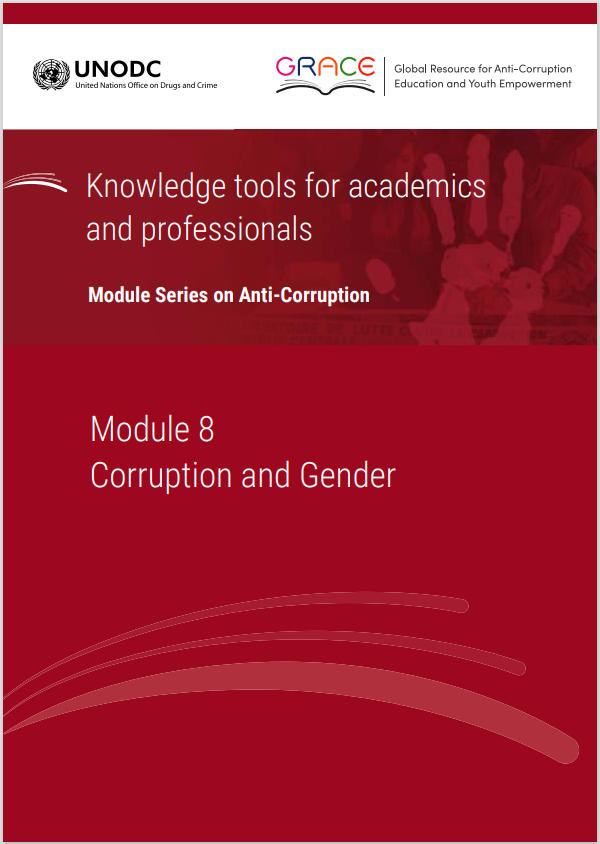This module is a resource for lecturers
Key issues
Corruption is a complex phenomenon, without a uniform definition. An overview of the different forms and definitions of corruption, as well as its harmful effects across the globe, is available in Module 1 of the E4J University Module Series on Anti-Corruption. For present purposes, it should be noted that the United Nations Convention against Corruption (UNCAC) refrains from providing one overarching definition of "corruption". Rather, it defines various acts of corruption and classifies them as criminal offences, such as bribery and embezzlement (in both the public and private sectors); trading in influence; abuse of functions; and illicit enrichment (UNCAC arts. 15-22). With 187 States parties (as of April 2020), UNCAC has attracted nearly universal adherence, and the different acts of corruption as defined by the Convention can be considered internationally accepted. Module 4 and Module 5 of the E4J University Module Series on Anti-Corruption include more detailed discussions on how these various acts of corruption manifest in the public and private sectors, respectively.
Although discussions around corruption have historically been viewed through an economic lens, its impact cannot be reduced to economic considerations alone. Corruption increases inequality, undermines development and human rights, threatens public trust in government, and decreases public funds for public services. The complex links between corruption, inclusion, equality and justice underpin the Sustainable Development Goals ( SDGs) adopted by the United Nations in 2015. Given the impact of corruption on inclusion, equality and justice, the interplay between gender and corruption has increasingly become the focus of academics and practitioners, as well as United Nations agencies (see examples from UNODC and UNDP).
The present Module introduces some of the main debates on the gender-corruption nexus. It starts by clarifying basic gender-related concepts, and moves on to discuss gender differences in corruption; theories that explain the gender-corruption nexus; the gendered impact of corruption; and gender mainstreaming as a way of addressing the differential impact of corruption on gender and, more generally, to prevent corruption. This Module is informed by the discussion on gender dimensions of ethics in Module 9 of the E4J University Module Series on Integrity and Ethics. As discussed in that Module, women and girls are overwhelmingly subjected to gender-based discrimination, with structural inequalities placing them at a disadvantage in terms of access to rights and opportunities. This is recognized by the SDGs, particularly Goal 5, which sets out to achieve gender equality and empower all women and girls by 2030. Ending gender discrimination against women is also the aim of the Convention on the Elimination of all forms of Discrimination Against Women (CEDAW), which was adopted by the United Nations in 1979 and includes 189 States parties (as of April 2020). Against this backdrop, the present Module focuses on the gendered impact of corruption on women. However, many of its insights can be applied to understand the impact of corruption on men, boys, and members of groups that could be marginalized on the basis of gender, such as the LGBTI community.
The following sections of the module provide an overview of:
- Defining sex, gender and gender mainstreaming
- Gender differences in corruption
- Theories explaining the gender-corruption nexus
- Gendered impacts of corruption
- Anti-corruption and gender mainstreaming
- Conclusion
- References
 Next: Defining sex, gender and gender mainstreaming
Next: Defining sex, gender and gender mainstreaming
 Back to top
Back to top
